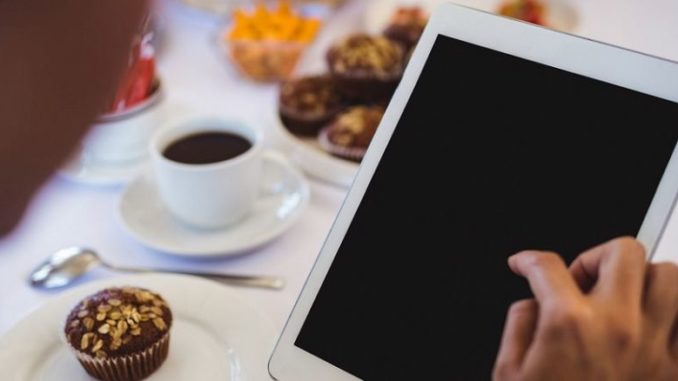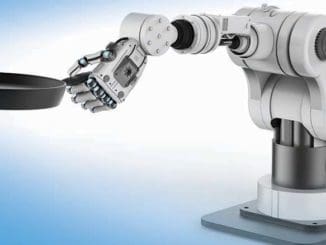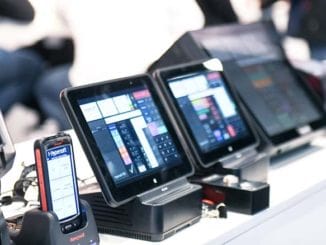
There is no doubt – digitalization and interconnection are technologies which already influence the present age noticeably, but will have an enormously formative influence on the future. Their potential for simplification and transparency is tremendous – but there are risks too.
By Dieter Mailander, mailander marketing.
Politicians speak out about it, business leaders, scholars, journalists and many others as well. Almost everyone is talking about digitalization. It is talked-up in all types of media. One could almost think that this is about a completely new phenomenon. And yet people have been converting classical analog (continuously variable transmitted) information into digital (binary) signals (for instance 0 or 1) since at least the turn of the 19th century. The loom by the Frenchman Joseph-Marie Jacquard (1752 – 1834) is an early example. Controlled by innumerable punched cards, large patterned textiles were able to be manufactured automatically in this way. Among the popular uses of digital technologies in recent times are audio recordings on CD’s/’DD’s, video recordings, or scans from templates.
Turbo Dynamic – Mega Intensive
Digitalization is therefore by no means new. Wherever we move in a job or privately, we leave behind digital foot prints – on the web, by telephone, navigation system or in other ways (that’s why one must deal with his or her personal data hypersensitivity).
However, what is entirely new is with which speed, intensity, and deep digitalization penetrates almost all the areas of society – even professional kitchens.
Digital Cross-Linking – Chances
The progressive interconnection of the areas of work and life and the transparency of all of the players connected with it, which harbors chances and risks, is also new. What does this mean for the commercial kitchen?
Chances for the In-House Workflow
- Digital cross-linking unites the data of different pieces of equipment of an operation so that a chef is able to recognize, for instance, whether he or she exceeds a critical limit of his or her power consumption, for which his or her electricity provider charges higher costs. The chef is able to counteract with suitable systems.
- Thermal data of food in the entire in-house process chain (frozen storage, cooking systems, equipment for stationary temporary storage, food distribution trolleys, equipment for regeneration and distribution) have to be collected, saved, and processed. Only then are the people responsible able to verify reliably whether the critical temperature limits of 65° C plus (hot components) or less than 8° C (cold components) are complied with. A usage which cannot be underestimated is available in the complete documentation of relevant HACCP procedures, which save a considerable amount of time.
- Digital cross-linking facilitates comparisons between different operations. The prerequisite is that they have agreed on a common standard, in order to report their data to a clearing center.
- The Control of the Total Food Flow from Farm to Fork
From the almost 8 billion people who live in the world, around one billion are starving. After years of steady decline, their numbers have increased since 2016 even though food could be produced for 12 to 14 billion people. This is not only about the productions of foodstuffs, but also about careful treatment with the resource food. The population in the European Community alone produces 88 million tons of food waste annually according to FUSIONS. Furthermore, especially cars on the streets which are not optimized pollute the atmosphere with CO2 und NOx . Digital cross-linking can help:
- to initiate measures for preventative maintenance in good time so that the off-times of systems with corresponding tours by service staff are minimized.
- to adapt delivery quantity precisely to the production needs so that surpluses in the storehouses, which eventually have to be destroyed, can be avoided.
- to monitor the temperature up to the distribution to guests, patients in hospitals or residents in nursing homes, in such a way so that the people responsible notice promptly, if it sinks below the critical line. In this way, they are able to counteract quickly and avoid that the food is thrown away.
Digital Cross-Linking – The Risks
But digital cross-linking also raises many questions, which every advocate has to take seriously if he or she doesn’t want to be accused of naivety. Dealing with data collection, storage, use and security, protection of privacy and other things don’t only affect the big data giants like Google, Amazon, Facebook, or Twitter and their private customers, but also every manufacturer of equipment or systems, which merge the data of kitchen customers into a main computer.
Car manufacturers collect data about the use of their vehicles. Perhaps they want to calculate the costs at some time or another, which relate to the vehicle load. But the subject is relevant for the “Eating out of Home” market too. With the producers of canteen kitchens, customer data is accumulated, for instance, about the use of systems, which among other things allow conclusions about the workload of the operations – information, which not every chef would like to disclose to their providers. Whoever would like to promote digital cross-linking, has to take the worries of their customers seriously and prioritize data security.
You can read the entire article in the Jan-Feb print issue of Frozen Food Europe magazine.



